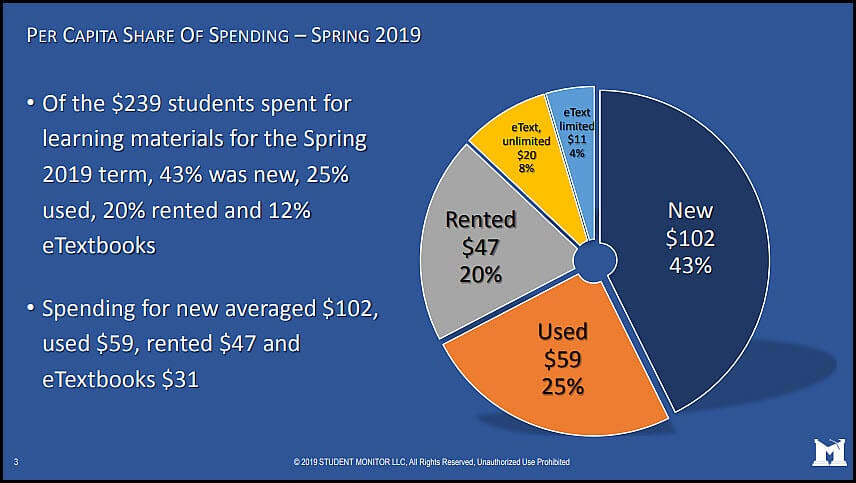
Student spending on textbooks have dropped significantly in the past five years. The Association of American Publishers reports that spending has dropped 35% during this time period. “When it comes to acquiring course materials students have more choice – and more affordable alternatives – than ever, including rental options for both print and digital materials, loose-leaf versions and creative new distribution models such as inclusive access and subscription services,” commented Kelly Denson, Senior Director, Education Policy and Programs, AAP. “The statistics make it clear that students are taking full advantage of the new, cost-effective options that publishers have made available, which has led to a significant decline in student spending.”
Meantime Student Watch (from the National Association of College Stores) and Student Monitor, an independent research firm found that student spending on course materials went from an average of $691 for the 2014-2015 academic year to $492 for the 2018-2019 academic year. In the most recent semester for which data is available, the report indicated that average spending on course materials went from $281 for spring of 2018, to $239 in spring of 2019, a decline of 15%.
Student Watch has also disclosed that in 2019, about one in four students (26%) preferred a strictly print textbook, down 21% from its highest point in fall 2016, but down only 6% from fall 2012 when the question was first asked. 21% of students surveyed said they preferred print with a digital component, which includes print books with online access or support, making the category the second most popular option.
Michael Kozlowski is the editor-in-chief at Good e-Reader and has written about audiobooks and e-readers for the past fifteen years. Newspapers and websites such as the CBC, CNET, Engadget, Huffington Post and the New York Times have picked up his articles. He Lives in Vancouver, British Columbia, Canada.
